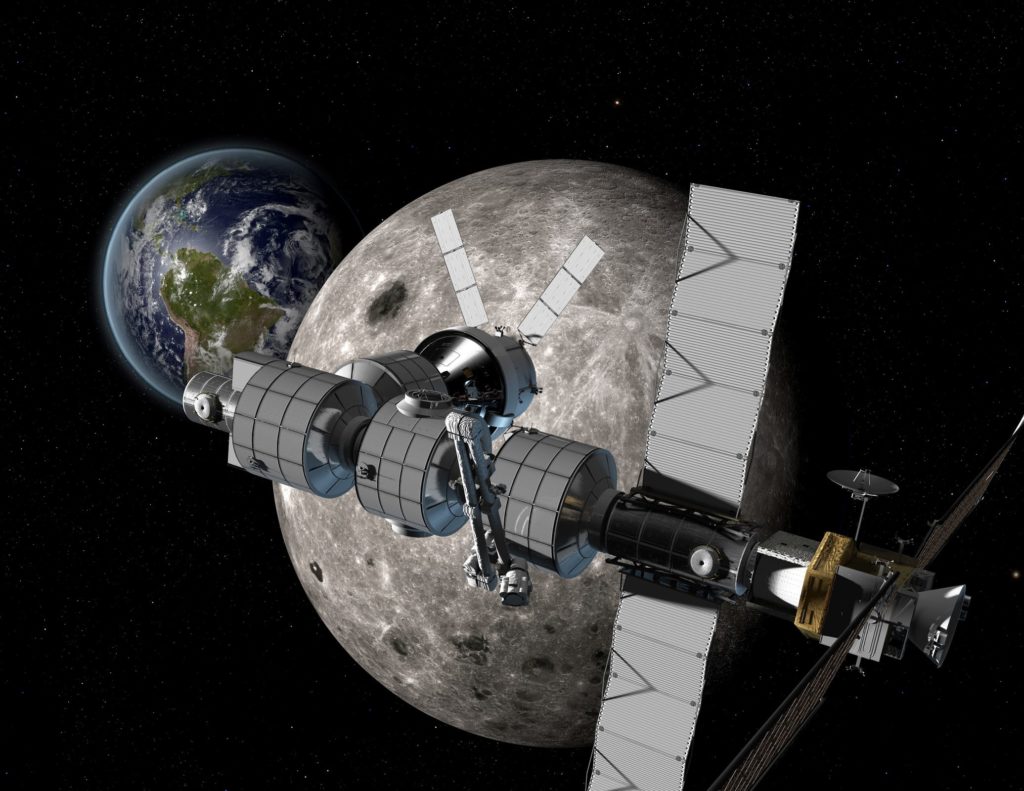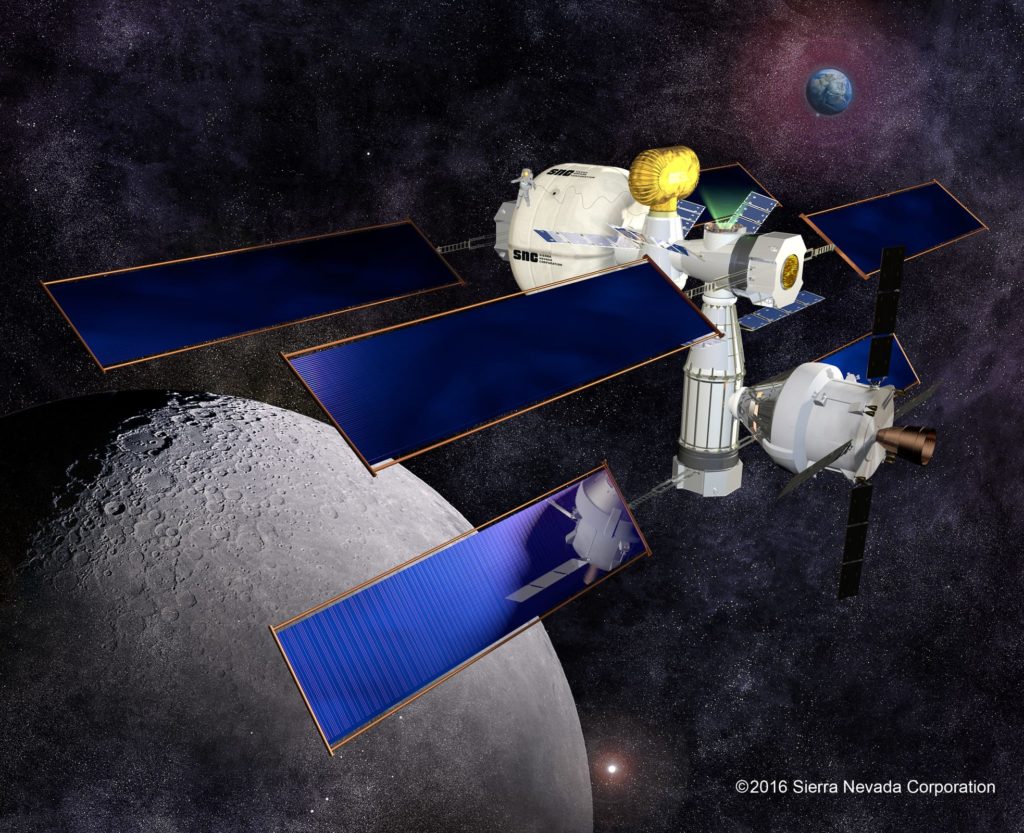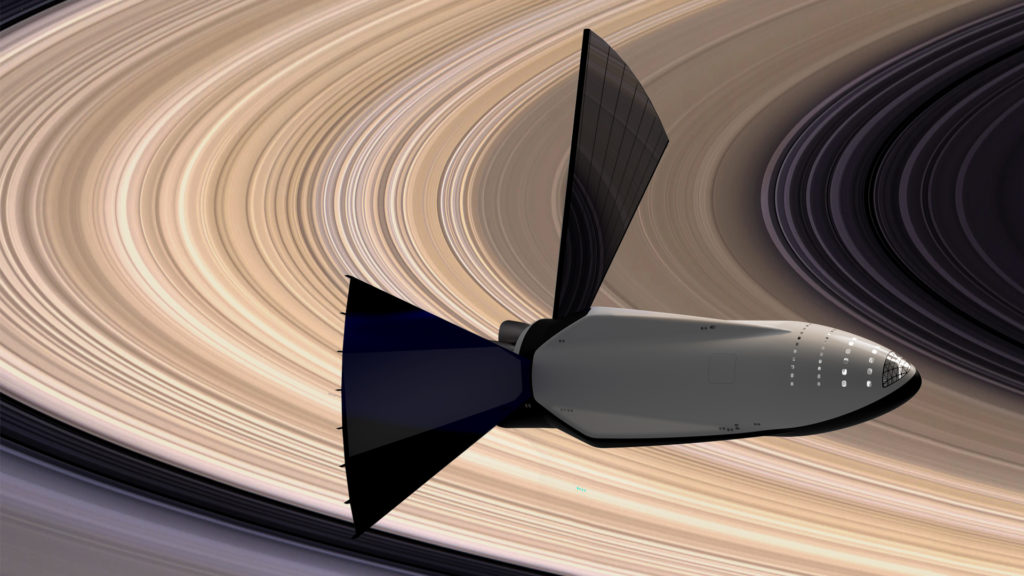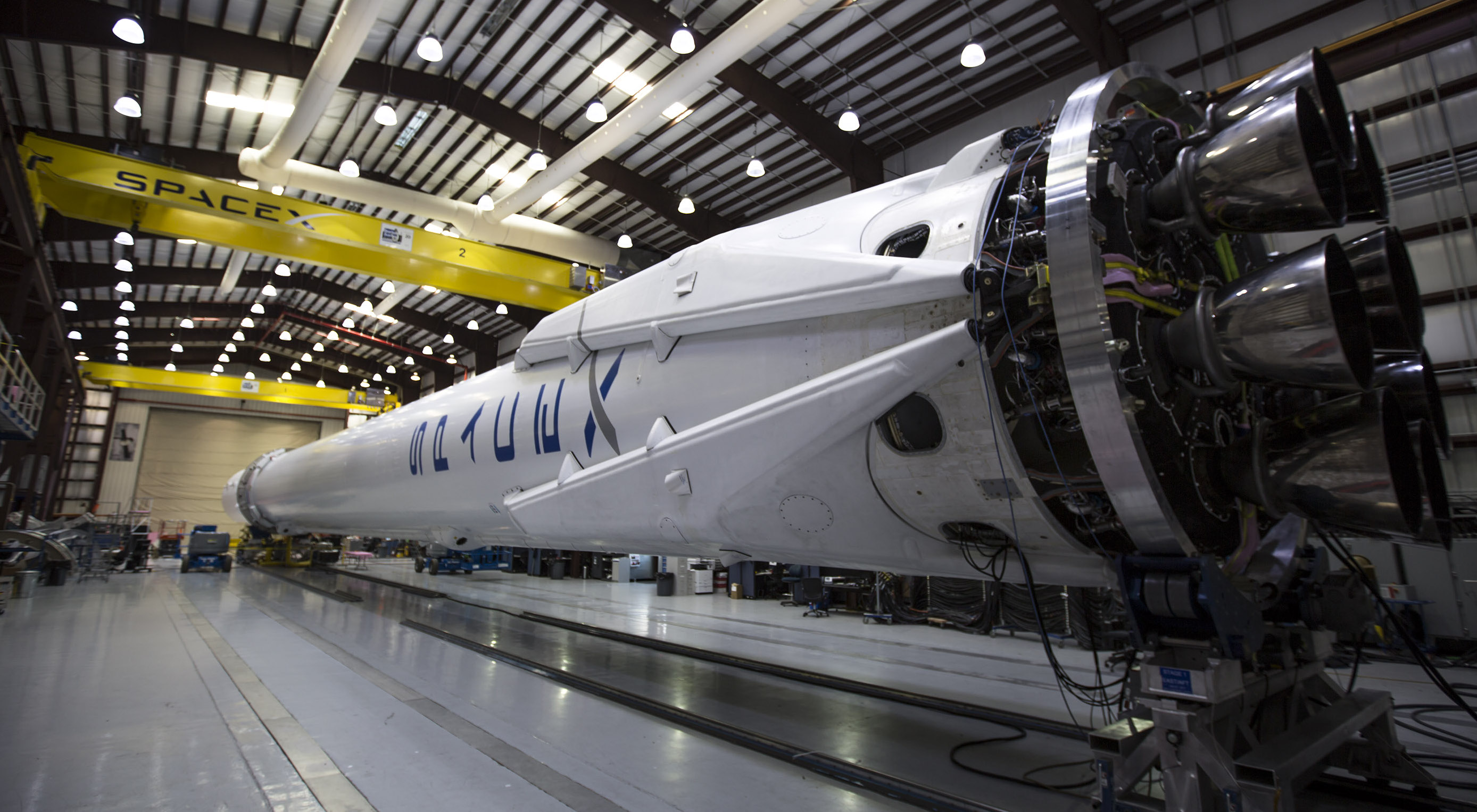

News
SpaceX lobbies NASA to foster competitive deep space exploration
Tim Hughes, the senior VP of SpaceX’s global business and government affairs, testified earlier this morning before the Senate Subcommittee on Space, Science, and Technology and the Committee on Commerce, Science, and Technology. He put forth a strong argument that it would be in the best interests of both NASA and the United States to encourage commercial competition in pursuit of the exploration of deep space, and that this could be done with concrete goals like improved interplanetary communications, vertically landing spacecraft on the Moon, and sending substantial amounts of cargo to Mars.
Before joining SpaceX, Hughes was the central actor responsible for drafting and supporting the Commercial Space Launch Amendments Act of 2004, which effectively paved the way for NASA’s first programs of commercial competition just two years later. He joined the company in 2005, and has defined SpaceX’s approach to legal and government affairs in the many years since.
Leveraging data related to the major successes and efficiency of NASA’s Commercial Orbital Transport Services (COTS) initiative, which began in earnest in 2006, Hughes demonstrated that by awarding SpaceX with funds from COTS, NASA ultimately found themselves with a highly-capable orbital launch vehicle after a relatively miniscule investment of $396 million into the venture. A study later conducted by NASA estimated that developing the same vehicle with a traditional NASA or commercial approach would have cost approximately $4 billion or $1.7 billion respectively, implying that the COTS approach was as much as ten times more efficient than NASA’s own traditional strategies of launch vehicle procurement.
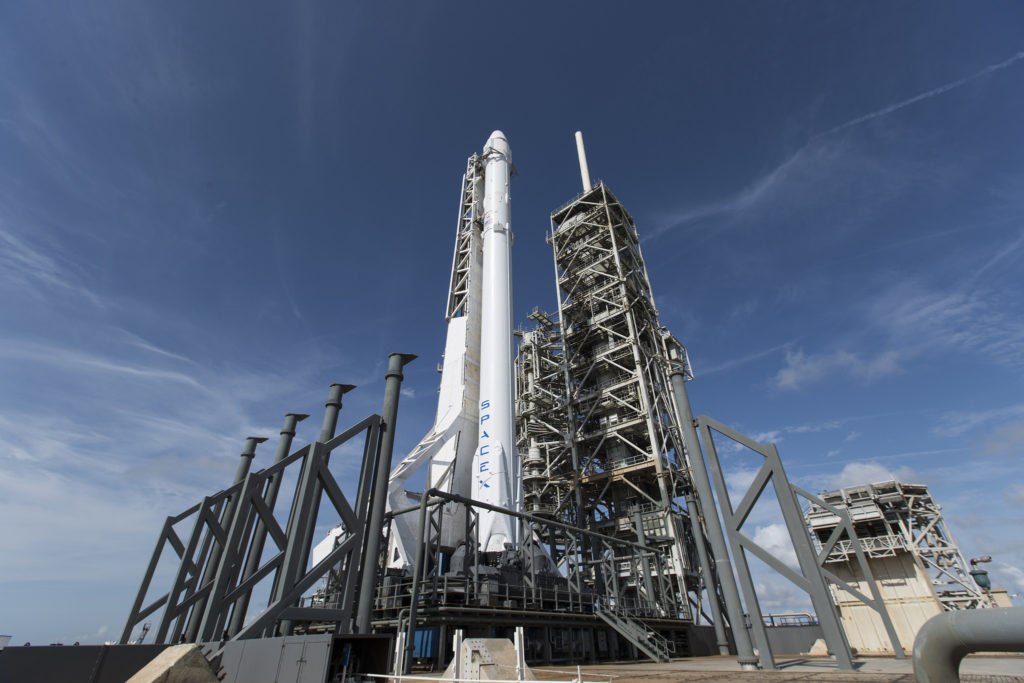
SpaceX’s CRS-11 mission just over a month ago was the company’s 10th successful transport of cargo to the ISS. (SpaceX)
Of course, SpaceX themselves invested over $500 million initially following NASA’s COTS award, but NASA’s bode of confidence in the company likely made it possible in the first place for it to raise that level of funding. The point of this presented data, of course, is to segue into the argument that the introduction of commercial competition into the field of deep space exploration could also benefit NASA in the sense that it might be drastically more cost effective than current approaches. Hughes did not explicitly call out any current programs during his testimony, but the clear figureheads are the Space Launch System and Orion. Such a request from private industry also acts as a bit of a gentle suggestion to those in NASA, related Congressional and Senatorial committees. Subcommittees that past and current traditional strategies of hardware procurement for space exploration may be showing signs of age and obsolescence in the face of more efficient commercial ventures.
In fact, NASA’s Chief of Spaceflight, Bill Gerstenmaier, admitted earlier today in a very rare streak of candor that he “[couldn’t] put a date on humans on Mars” and that that was a result of a severe lack of budget to design and build the myriad technologies, hardware, and vehicles necessary to actually take advantage of a heavy launch vehicle like the Space Launch System. NASA is admittedly beginning to pursue and request industry information for what they are calling a Deep Space Gateway or NEXTSTEP, intended to be a small orbital base or space station located closer to the Moon than to Earth. A successfully-developed DSG would indeed become one completed facet of the architecture needed to bring humans to Mars, and can be compared in concept to SpaceX’s Big Falcon Spaceship in a limited fashion.
- Boeing (pictured here), SNC, and five other companies all produced concepts that are now being evaluated by NASA for the NEXTSTEP program. (Boeing)
- Sierra Nevada’s NEXTSTEP cislunar station concept. (SNC)
- SpaceX’s conceptual Interplanetary Transport System from 2016 was considerably larger and more structurally complex than 2017’s BFR. (SpaceX)
Given Gestenmaier’s frank admittance that NASA’s budget is not presently able to support even a fraction of what is necessary for their “Journey to Mars”, exploring alternative methods of more efficiently exploiting the money NASA could realistically make available for further deep space exploration is almost certainly a major priority, or it at least ought to be. Gertsenmaier’s unspoken need for more efficient methods of exploring Mars and deep space would perfectly mesh with the requested program SpaceX’s Tim Hughes also presented earlier today, and the potential benefits SpaceX might also reap from such an arrangement make it worth serious consideration.
The political and corporate mire that NASA is almost innately intertwined with is the primary and most obvious barrier to the existence of a deep space COTS-esque program, but it is possible that some amount of calculated politicking on behalf of SpaceX could result in the right Senators or Representatives getting behind SpaceX’s mission of cost-effective space exploration.
News
Tesla UK sales see 14% year-over-year rebound in June: SMMT data
The SMMT stated that Tesla sales grew 14% year-over-year to 7,719 units in June 2025.

Tesla’s sales in the United Kingdom rose in June, climbing 14% year-over-year to 7,719 units, as per data from the Society of Motor Manufacturers and Traders (SMMT). The spike in the company’s sales coincided with the first deliveries of the updated Model Y last month.
Model Y deliveries support Tesla’s UK recovery
Tesla’s June performance marked one of its strongest months in the UK so far this year, with new Model Y deliveries contributing significantly to the company’s momentum.
While the SMMT listed Tesla with 7,719 deliveries in June, independent data from New AutoMotive suggested that the electric vehicle maker registered 7,891 units during the month instead. However, year-to-date figures for Tesla remain 2% down compared to 2024, as per a report from Reuters.
While Tesla made a strong showing in June, rivals are also growing. Chinese automaker BYD saw UK sales rise nearly fourfold to 2,498 units, while Ford posted the highest EV growth among major automakers, with a more than fourfold increase in the first half of 2025.
Overall, the UK’s battery electric vehicle (BEV) demand surged 39% to to 47,354 units last month, helping push total new car sales in the UK to 191,316 units, up 6.7% from the same period in 2024.
EV adoption accelerates, but concerns linger
June marked the best month for UK car sales since 2019, though the SMMT cautioned that growth in the electric vehicle sector remains heavily dependent on discounting and support programs. Still, one in four new vehicle buyers in June chose a battery electric vehicle.
SMMT Chief Executive Mike Hawes noted that despite strong BEV demand, sales levels are still below regulatory targets. “Further growth in sales, and the sector will rely on increased and improved charging facilities to boost mainstream electric vehicle adoption,” Hawes stated.
Also taking effect this week was a new US-UK trade deal, which lowers tariffs on UK car exports to the United States from 27.5% to 10%. The agreement could benefit UK-based EV producers aiming to expand across the country.
News
Tesla Model 3 ranks as the safest new car in Europe for 2025, per Euro NCAP tests
Despite being on the market longer than many of its rivals, the Tesla Model 3 continues to set the bar for vehicle safety.

The Tesla Model 3 has been named the safest new car on sale in 2025, according to the latest results from the Euro NCAP. Among 20 newly tested vehicles, the Model 3 emerged at the top of the list, scoring an impressive 359 out of 400 possible points across all major safety categories.
Tesla Model 3’s safety systems
Despite being on the market longer than many of its rivals, the Tesla Model 3 continues to set the bar for vehicle safety. Under Euro NCAP’s stricter 2025 testing protocols, the electric sedan earned 90% for adult occupant protection, 93% for child occupant protection, 89% for pedestrian protection, and 87% for its Safety Assist systems.
The updated Model 3 received particular praise for its advanced driver assistance features, including Tesla’s autonomous emergency braking (AEB) system, which performed well across various test scenarios. Its Intelligent Speed Assistance and child presence detection system were cited as noteworthy features as well, as per a WhatCar report.
Other notable safety features include the Model 3’s pedestrian-friendly pop-up hood and robust crash protection for both front and side collisions. Euro NCAP also highlighted the Model 3’s ability to detect vulnerable road users during complex maneuvers, such as turning across oncoming traffic.
Euro NCAP’s Autopilot caution
While the Model 3’s safety scores were impressive across the board, Euro NCAP did raise concerns about driver expectations of Tesla’s Autopilot system. The organization warned that some owners may overestimate the system’s capabilities, potentially leading to misuse or inattention behind the wheel. Even so, the Model 3 remained the highest-scoring vehicle tested under Euro NCAP’s updated criteria this year.
The Euro NCAP’s concerns are also quite interesting because Tesla’s Full Self-Driving (FSD) Supervised, which is arguably the company’s most robust safety suite, is not allowed for public rollout in Europe yet. FSD Supervised would allow the Model 3 to navigate inner city streets with only minimal human supervision.
Other top scorers included the Volkswagen ID.7, Polestar 3, and Geely EX5, but none matched the Model 3’s total score or consistency across categories. A total of 14 out of 20 newly tested cars earned five stars, while several models, including the Kia EV3, MG ZS, and Renault 5, fell short of the top rating.
Elon Musk
Why Tesla’s Q3 could be one of its biggest quarters in history
Tesla could stand to benefit from the removal of the $7,500 EV tax credit at the end of Q3.

Tesla has gotten off to a slow start in 2025, as the first half of the year has not been one to remember from a delivery perspective.
However, Q3 could end up being one of the best the company has had in history, with the United States potentially being a major contributor to what might reverse a slow start to the year.
Earlier today, the United States’ House of Representatives officially passed President Trump’s “Big Beautiful Bill,” after it made its way through the Senate earlier this week. The bill will head to President Trump, as he looks to sign it before his July 4 deadline.
The Bill will effectively bring closure to the $7,500 EV tax credit, which will end on September 30, 2025. This means, over the next three months in the United States, those who are looking to buy an EV will have their last chance to take advantage of the credit. EVs will then be, for most people, $7,500 more expensive, in essence.
The tax credit is available to any single filer who makes under $150,000 per year, $225,000 a year to a head of household, and $300,000 to couples filing jointly.
Ending the tax credit was expected with the Trump administration, as his policies have leaned significantly toward reliance on fossil fuels, ending what he calls an “EV mandate.” He has used this phrase several times in disagreements with Tesla CEO Elon Musk.
Nevertheless, those who have been on the fence about buying a Tesla, or any EV, for that matter, will have some decisions to make in the next three months. While all companies will stand to benefit from this time crunch, Tesla could be the true winner because of its sheer volume.
If things are done correctly, meaning if Tesla can also offer incentives like 0% APR, special pricing on leasing or financing, or other advantages (like free Red, White, and Blue for a short period of time in celebration of Independence Day), it could see some real volume in sales this quarter.
You can now buy a Tesla in Red, White, and Blue for free until July 14 https://t.co/iAwhaRFOH0
— TESLARATI (@Teslarati) July 3, 2025
Tesla is just a shade under 721,000 deliveries for the year, so it’s on pace for roughly 1.4 million for 2025. This would be a decrease from the 1.8 million cars it delivered in each of the last two years. Traditionally, the second half of the year has produced Tesla’s strongest quarters. Its top three quarters in terms of deliveries are Q4 2024 with 495,570 vehicles, Q4 2023 with 484,507 vehicles, and Q3 2024 with 462,890 vehicles.
-

 Elon Musk5 days ago
Elon Musk5 days agoTesla investors will be shocked by Jim Cramer’s latest assessment
-

 News1 week ago
News1 week agoTesla Robotaxi’s biggest challenge seems to be this one thing
-

 Elon Musk2 weeks ago
Elon Musk2 weeks agoFirst Look at Tesla’s Robotaxi App: features, design, and more
-

 News2 weeks ago
News2 weeks agoWatch Tesla’s first driverless public Robotaxi rides in Texas
-

 News2 weeks ago
News2 weeks agoSpaceX and Elon Musk share insights on Starship Ship 36’s RUD
-

 News1 week ago
News1 week agoWatch the first true Tesla Robotaxi intervention by safety monitor
-

 News2 weeks ago
News2 weeks agoTesla has started rolling out initial round of Robotaxi invites
-

 Elon Musk2 weeks ago
Elon Musk2 weeks agoTesla to launch in India in July with vehicles already arriving: report

